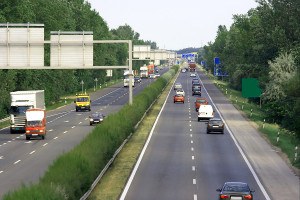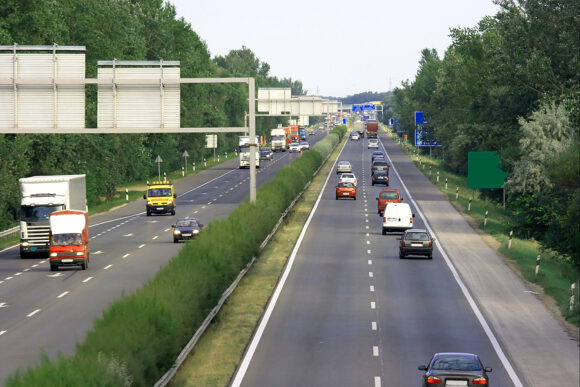The government is speeding up research on safety systems that automatically prevent drivers from operating their cars if they are drunk or aren’t properly buckled in.
Officials also said Thursday that they expect to decide by year’s end how to encourage automakers to make some special safety systems already in certain high-end vehicles available in more cars. Those systems warn drivers before a collision that they are about to run into another vehicle and can brake automatically to avoid a crash or make it less severe.
The innovations – collision avoidance, seat belt interlocks and driver alcohol detection systems – hold the potential of dramatically reducing traffic fatalities, according to the National Highway Traffic Safety Administration.
 As they looked ahead to emerging safety technologies, officials released data showing the first increase in highway fatalities since 2005. There were 33,561 traffic deaths in 2012, or 1,082 more than the year before.
As they looked ahead to emerging safety technologies, officials released data showing the first increase in highway fatalities since 2005. There were 33,561 traffic deaths in 2012, or 1,082 more than the year before.
Despite the government’s best efforts, some Americans are still driving drunk, driving distracted and not wearing seat belts, David Strickland, the agency’s head, told reporters in a conference call.
“These technologies are in within reach,” he said. “They address the top three highway safety threats. They have the potential to significantly decrease those deaths. We only need the will to act.”
The 3 percent increase in highway fatalities may be due in part to last year’s unusually warm winter, which lengthened the motorcycle riding season. Seventy-two percent of the increase occurred in the first three months of the year. Most of those involved were motorcyclists or pedestrians, the government said.
Preliminary data so far this year indicates traffic deaths may be dropping again, Strickland said.
The seat belt interlocks would prevent cars and trucks from being driven when the driver or a passenger isn’t buckled in properly. The agency said this potentially could save about 3,000 people a year.
The agency is examining whether it should change safety standards to allow automakers to use the devices to satisfy current government requirements for occupant protection in crash tests.
Automakers have indicated they’d prefer to install automatic systems that ensure all occupants are belted, which is cheaper than spending money on designing the interiors of cars and trucks to ensure unbelted occupants, who get thrown around in collisions, aren’t injured, Strickland said. The safety administration is trying to determine whether the interlocks can be made tamper-proof and highly reliable.
The “driver alcohol detection system” differs from devices already required by some states for drivers arrested or convicted of drunken driving. In those cases, drivers usually have to take some step – often breathing into a tube – to test their blood alcohol content before starting the car.
Detection systems such as those NHTSA is researching with automakers don’t require any action on the driver’s part except putting his hands on the steering wheel, pushing a start button with a finger or simply breathing. The systems can detect through touch or air samples whether the driver’s blood alcohol content is above the .08 legal limit. The idea is to eventually include the systems as standard or optional equipment in new vehicles, regardless of whether the driver has a history of drunken driving.
“The automatic system would be enabled every time the car is started, but unobtrusive so it would not pose an inconvenience to the non-intoxicated driver,” the agency said.
The technology is still at least five years away, Strickland said.
There were 10,322 people killed in drunken driving crashes last year, a 4.6 percent increase over 2011, the agency said. Most of the drivers involved had a blood alcohol content of 0.15 or higher, nearly double the legal limit. “Such technology could save thousands of these victims every year,” the agency said.
After six years of declines, the increase in drunken driving deaths is “alarming,” said Jan Withers, president of Mothers Against Drunk Driving. “This news is frustrating because we know what works, and we know how to stop these senseless tragedies.”
The collision avoidance systems address one of the most common types of auto accidents. Last year, one-third of all police reported crashes that started with one vehicle striking the rear end of another vehicle, the agency said.
Motorcycle deaths were up 7.1 percent last year, the third annual increase. Pedestrians also experienced a large increase in fatalities, 6.4 percent. A majority of pedestrian deaths occur in urban areas at night and involve alcohol, often with pedestrians stepping into the street in the middle of the block rather than at intersections.
Was this article valuable?
Here are more articles you may enjoy.


 Tesla, EEOC Plan Talks to Settle Factory Racism Suit
Tesla, EEOC Plan Talks to Settle Factory Racism Suit  Munich Re: Insured Losses From Wildfires, Storms and Floods Hit Record High
Munich Re: Insured Losses From Wildfires, Storms and Floods Hit Record High  Insurance Payments Now at $22.4B From LA Wildfires One Year Ago
Insurance Payments Now at $22.4B From LA Wildfires One Year Ago  Musk’s xAI Faces California AG Probe Over Grok Sexual Images
Musk’s xAI Faces California AG Probe Over Grok Sexual Images 